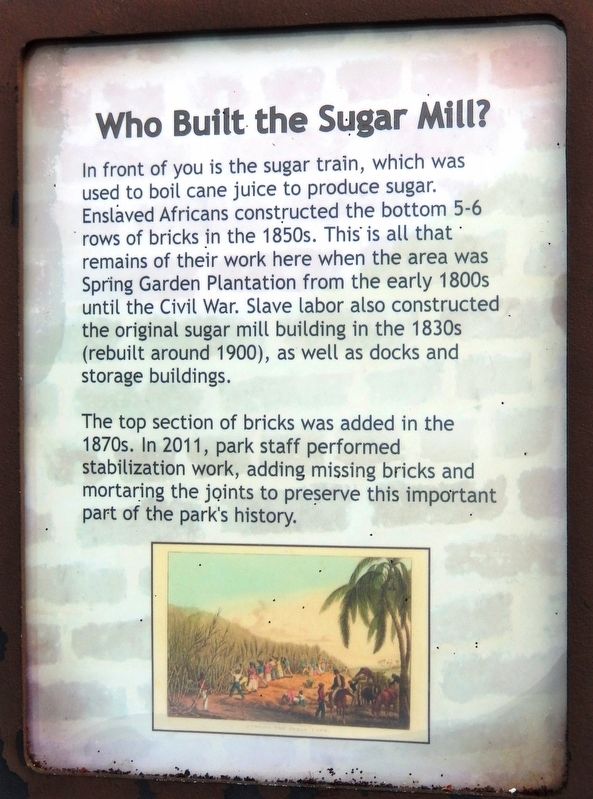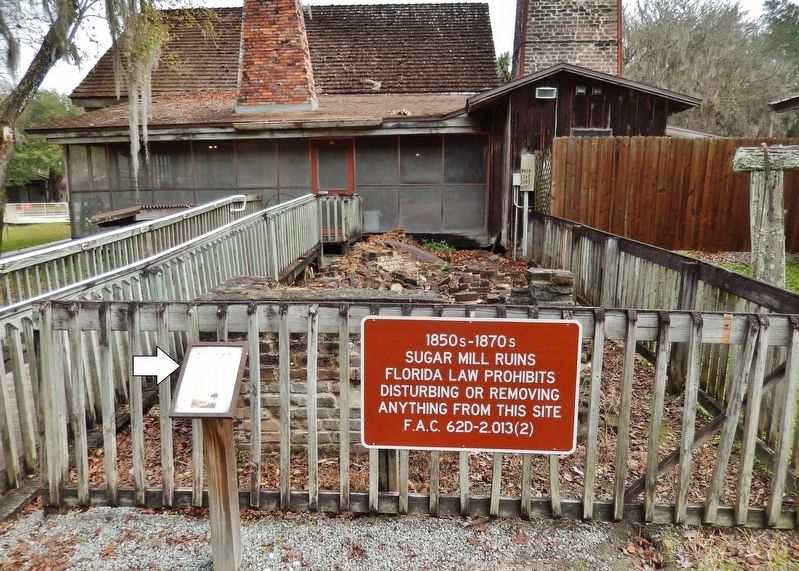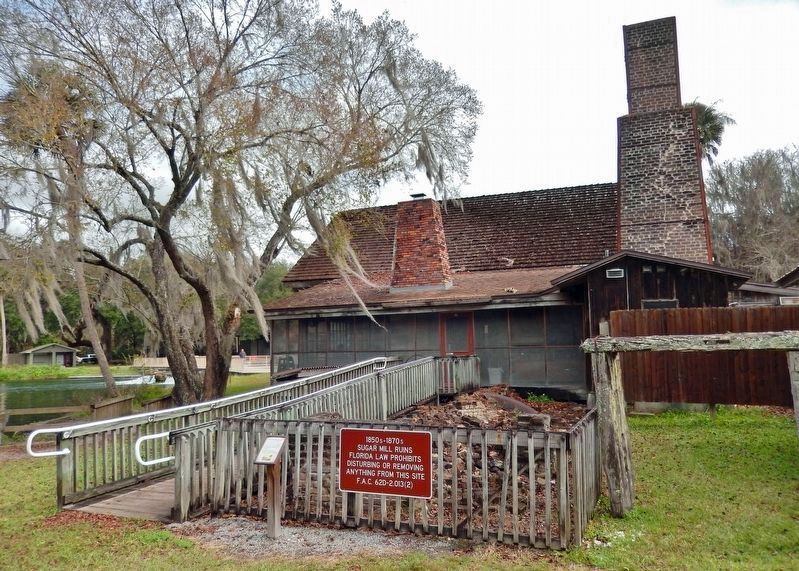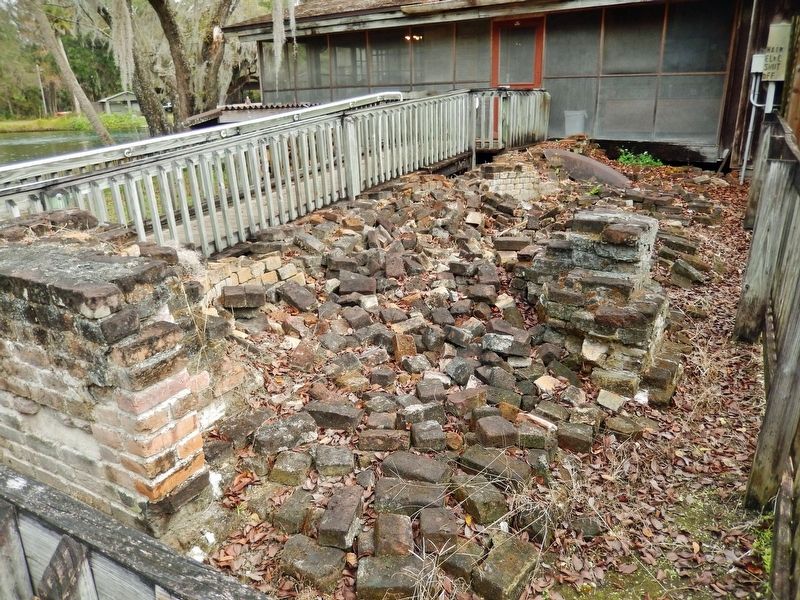De Leon Springs in Volusia County, Florida — The American South (South Atlantic)
Who Built the Sugar Mill?
The top section of bricks was added in the 1870s. In 2011, park staff performed stabilization work, adding missing bricks and mortaring the joints to preserve this important part of the park's history.
Topics. This historical marker is listed in these topic lists: African Americans • Agriculture • Industry & Commerce • Parks & Recreational Areas. A significant historical year for this entry is 1850.
Location. 29° 8.038′ N, 81° 21.807′ W. Marker is in De Leon Springs, Florida, in Volusia County. Marker can be reached from the intersection of Ponce Deleon Boulevard and South County Road 3. Marker is located within De León Springs State Park, on the west side of the Old Spanish Sugar Mill. Touch for map. Marker is at or near this postal address: 601 Ponce Deleon Boulevard, De Leon Springs FL 32130, United States of America. Touch for directions.
Other nearby markers. At least 8 other markers are within 5 miles of this marker, measured as the crow flies. Sugar Mill Machinery (a few steps from this marker); Sugar Mill Wheel (a few steps from this marker); The Fountain of Youth (a few steps from this marker); Ponce De Leon Springs (a few steps from this marker); The Hotel Clubhouse (within shouting distance of this marker); DeLeon Springs Colored School (approx. 1.7 miles away); H.L. Wynns’s Commissary (approx. 4.9 miles away); Swedish Pioneer Memorial (approx. 4.9 miles away). Touch for a list and map of all markers in De Leon Springs.
Related markers. Click here for a list of markers that are related to this marker. Spring Garden Plantation Sugar Mill
Also see . . .
1. De Leon Springs State Park History.
England took possession of Florida from 1763 to 1783, but did not occupy this area. Spain regained control in 1783, and land grants were given to U.S. citizens, starting with William Williams, who had 2,020 acres here, along with the first enslaved Africans. He named his property Spring Garden Plantation. Subsequent owners further developed the plantation, planting cotton and sugarcane. The first water-powered sugar mill in Florida was built here in 1832 - some of the brickwork and machinery is preserved behind the restaurant.(Submitted on December 30, 2021, by Cosmos Mariner of Cape Canaveral, Florida.)
2. De Leon Springs State Park.
Florida became a U.S. territory in 1821. The Woodruffs owned the plantation from 1823 to 1830, selling it to Colonel Orlando Rees, who built the only water-powered sugar mill in Florida.(Submitted on December 30, 2021, by Cosmos Mariner of Cape Canaveral, Florida.)
3. Sugarcane milling.
Juice extraction by milling is the process of squeezing the juice from the cane under a set of mills using high pressure between heavy iron rollers. Those mills can have from 3 up to 6 rolls; every set of mills is called a tandem mill or mill train. Milling trains typically have four, five or six mills in the tandem.(Submitted on December 30, 2021, by Cosmos Mariner of Cape Canaveral, Florida.)
Credits. This page was last revised on January 1, 2022. It was originally submitted on December 30, 2021, by Cosmos Mariner of Cape Canaveral, Florida. This page has been viewed 420 times since then and 13 times this year. Photos: 1, 2, 3, 4. submitted on December 30, 2021, by Cosmos Mariner of Cape Canaveral, Florida.



